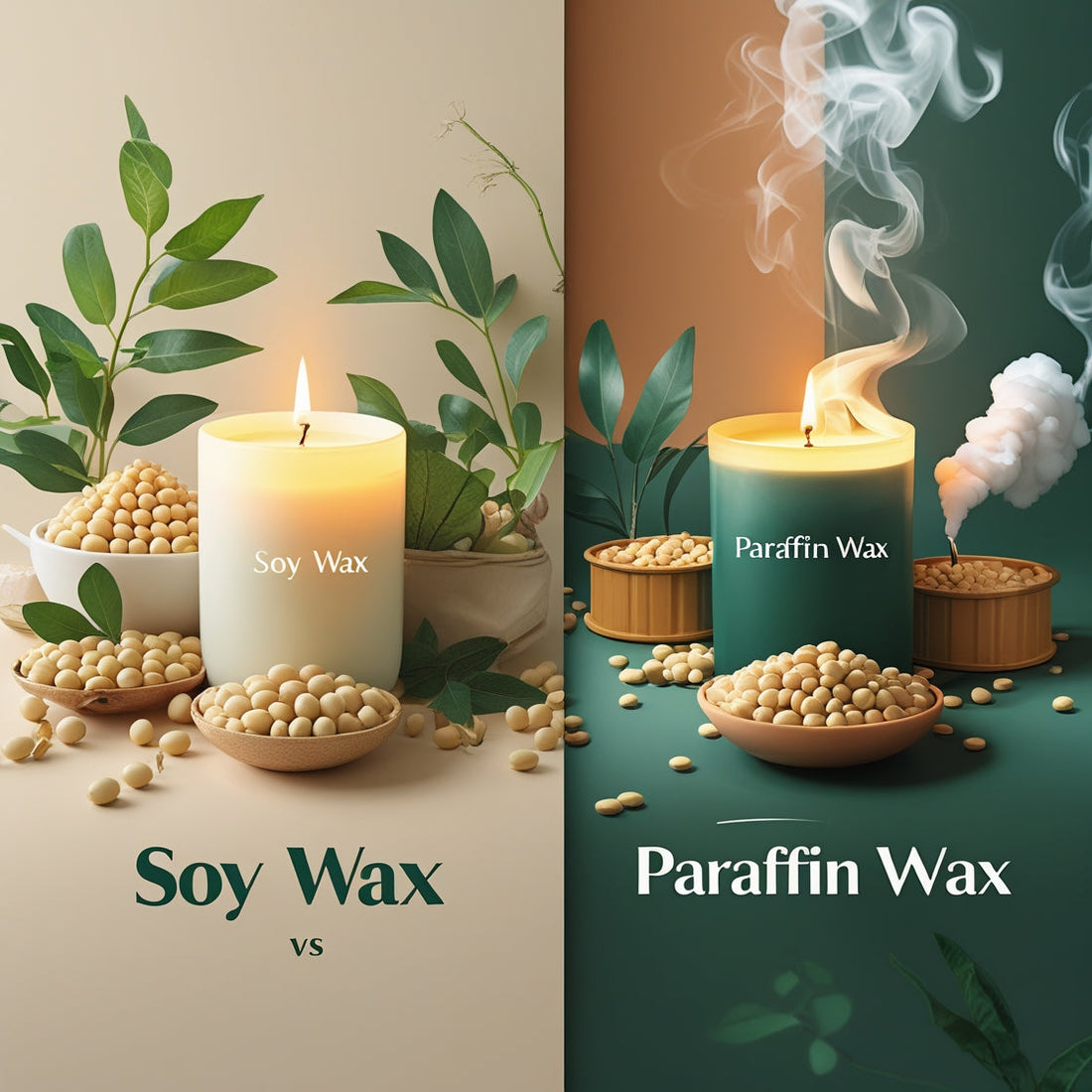
Are Scented Candles Safe? Uncovering the Truth Behind Your Favorite Fragrances
Nikita Jaisinghani

Imagine walking into a room filled with the soothing scent of coffee or the refreshing aroma of flowers. It’s an instant mood-lifter, right? Scented candles have become a beloved part of our everyday lives, bringing comfort, ambiance, and a touch of luxury. But as we enjoy their calming glow, it’s natural to pause and ask: are scented candles really safe? With their popularity soaring, concerns about ingredients and health effects have also lit up.
Let’s explore what is behind these fragrant flames. This article breaks down what goes into scented candles, compares natural and synthetic options, and guides you in choosing candles that won’t compromise your well-being. You deserve to light up your space with peace of mind—because your cozy moments should feel both beautiful and safe.
Common Ingredients in Scented Candles
Scented candles are made of three main components: wax, fragrance oils, and wicks. The wax acts as the candle’s fuel, fragrance oils give each candle its signature scent, and the wick delivers the flame.
Paraffin wax is a petroleum-based option that’s widely used for its affordability and fragrance retention. However, it can release potentially harmful chemicals when burned. Soy wax, made from soybeans, is a cleaner, more eco-friendly alternative that produces less soot. Beeswax is another natural choice, known for its clean burn and faint honey aroma.
Fragrance oils can be either natural or synthetic with harmful chemicals. Natural oils are extracted from plants and flowers, including essential oils. Synthetic oils are lab-created and offer a wider scent variety, but may contain chemicals that could trigger sensitivities.
Wicks are typically made from cotton or a cotton blend. Some are treated with chemicals or contain metal cores to help them stand upright. Today, safer alternatives include untreated cotton, hemp, or wood wicks that burn cleaner and release fewer pollutants.
Are Natural Scented Candles Safer?
Natural scented candles, made with plant-based waxes and essential oils, are generally safer and more eco-conscious. They’re biodegradable, renewable, and tend to produce fewer pollutants. This makes them gentler on those with sensitivities.
When shopping for natural candles, prioritize purity. Choose candles with the unadulterated wax , and look for wicks made from natural materials like cotton or wood. Avoid candles with fillers, additives, or metal-core wicks for the safest experience.
Understanding Candle Waxes: Paraffin vs. gel wax vs. Soy vs. Beeswax
Paraffin wax is commonly used because it’s inexpensive and holds fragrance well. But it’s derived from petroleum and may emit volatile organic compounds (VOCs) like benzene and toluene, which are linked to indoor air pollution.
Gel wax is a unique option made from a combination of mineral oil and polymer resin. Its jelly-like consistency creates a translucent, glossy look that’s perfect for decorative candles. Gel wax burns hotter than other types of wax, which means it requires special care. However, it has a long burn time and can hold intricate objects like dried flowers or glitter. While visually appealing, gel wax is not considered as safe as other wax types like soy or beeswax. For more details on gel waxes, check out this link.
Soy wax, derived from soybean oil, is a safer, greener alternative. It burns cleaner, produces less soot, and has a longer burn time. It’s also biodegradable and renewable, making it a more sustainable choice.
Beeswax is produced naturally by honeybees. It’s prized for its clean burn and the ability to emit negative ions, which can help neutralize indoor pollutants. Though beeswax candles tend to be more expensive, they last longer and offer the added benefit of air purification.
The Role of Wick Materials in Candle Safety
Wicks can significantly influence how safely a candle burns. Traditional wicks made from cotton or a blend of fibers are generally safe, especially when untreated.
In the past, metal-core wicks, especially those containing lead, were used to help the wick stand upright. These have been banned in many countries due to health concerns. Burning lead-core wicks can release toxic particles that pose serious risks.
Today, the safest wick options are those made from untreated cotton, hemp, or wood. Wooden wicks are also known for their subtle crackling sound, adding to the sensory experience. Ensure the candle uses non-toxic, natural wick materials.
How to Choose Safe Scented Candles
When selecting candles, start with the wax. Go for natural options like soy, beeswax, or coconut wax. These are cleaner burning and better for the environment. Avoid paraffin wax, particularly if you plan to burn candles often or in enclosed spaces.
Next, look at the fragrance oils. Essential oils and phthalate-free synthetic fragrances are safer choices.
Wick material also matters. Choose wicks made from cotton, wood, or hemp. Steer clear of any candle with metal-core or chemically treated wicks.
Conclusion: Balancing Enjoyment and Safety
Scented candles can completely transform a space. They create atmosphere, evoke memories, and help us unwind. But it’s important to be mindful of the materials they contain.
Choosing clean-burning waxes and safe ingredients goes a long way in reducing potential risks. Practicing candle safety—like trimming the wick, ensuring proper ventilation, and never leaving a candle unattended—also helps keep your space healthy.
Ultimately, it’s all about balance. With thoughtful choices, you can enjoy all the cozy, comforting vibes of scented candles—without sacrificing your well-being.
